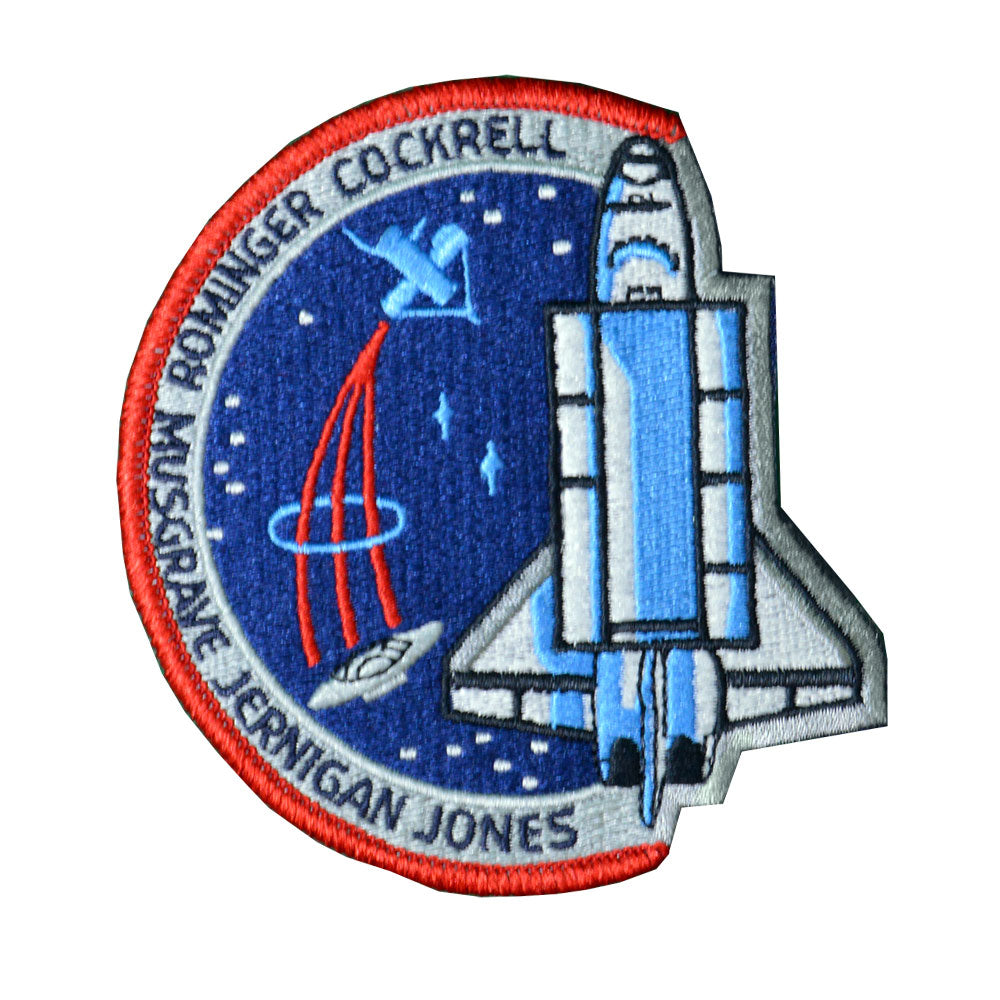
STS-80 Patch
Mission Highlights
Final shuttle flight of 1996 was highlighted by the successful deployment, operation and retrieval of two free-flying research spacecraft. The two planned extravehicular activities (EVAs) were canceled.
Orbiting and Retrievable Far and Extreme Ultraviolet Spectrometer-Shuttle Pallet Satellite II (ORFEUS-SPAS II) deployed on flight day one to begin approximately two weeks of data- gathering. Making its second flight aboard the shuttle, ORFEUS-SPAS II featured three primary scientific instruments: the ORFEUS-Telescope with the Far Ultraviolet (FUV) Spectrograph and Extreme Ultraviolet (EUV) Spectrograph. A secondary but highly complementary payload was the Interstellar Medium Absorption Profile Spectrograph (IMAPS). Non-astronomy payloads on ORFEUS-SPAS included the Surface Effects Sample Monitor (SESAM), the ATV Rendezvous Pre-Development Project (ARP) and the Student Experiment on ASTRO-SPAS (SEAS).
ORFEUS-SPAS II mission dedicated to astronomical observations at very short wavelengths to: Investigate nature of hot stellar atmospheres; investigate cooling mechanisms of white dwarf stars; determine nature of accretion disks around collapsed stars; investigate supernova remnants; and investigate interstellar medium and potential star-forming regions.
All ORFEUS-SPAS II mission goals were achieved and there were no significant problems with either instruments or support hardware. Some 422 observations of almost 150 astronomical objects were completed, including the moon, nearby stars, distant Milky Way stars, stars in other galaxies, active galaxies and quasar 3C273. In comparison to the first ORFEUS-SPAS mission in 1993, the ORFEUS-SPAS II instruments were more sensitive and yielded higher-quality data. In addition, more than twice the data was obtained than on the first ORFEUS-SPAS flight.
Wake Shield Facility-3 (WSF-3) deployed on flight day 4. WSF is a 12-foot diameter, free-flying stainless steel disk designed to generate ultravacuum environment in which to grow semiconductor thin films for use in advanced electronics. Third flight was highly successful, with maximum seven thin film growths of semiconductor materials achieved and satellite hardware performing near-flawlessly. WSF-3 retrieved after three days of free-flight.
Two planned six-hour EVAs by Jernigan and Jones were designed to evaluate equipment and procedures that will be used during construction and maintenance of the International Space Station. However, crew could not open outer airlock hatch and when troubleshooting did not reveal cause, mission managers concluded it would not be prudent to attempt the two EVAs and risk unnecessary damage to hatch or seals. Crew was able to evaluate new Pistol Grip Tool, similar to handheld drill, in middeck. Post-landing assessment of hatch indicated a small screw had become loose from an internal assembly and lodged in an actuator — a gearbox-type mechanism that operates linkages that secure the hatch — preventing crew from opening hatch. Hatch opened easily when replacement actuator installed. Analysis was under way to determine what additional checks needed to be made on hatches to preclude recurrence of problem.
Other experiments: Space Experiment Module (SEM) to provide increased educational access to space; NIH-R4, fourth in series of collaborative experiments developed by NASA and National Institutes of Health, to investigate role of calcium in blood pressure regulation; NASA/CCM-A, one of series of Shuttle bone cell experiments; Biological Research in Canister (BRIC)-09 experiment to study influence of microgravity on genetically-altered tomato and tobacco seedlings; Commercial MDA ITA experiment (CMIX-5), the last in series of shuttle experiments; and Visualization in an Experimental Water Capillary Pumped Loop (VIEW-CPL), a middeck experiment, to investigate method for spacecraft thermal management. Crew also worked with Space Vision System, designed to monitor position and alignment of structures in space.


